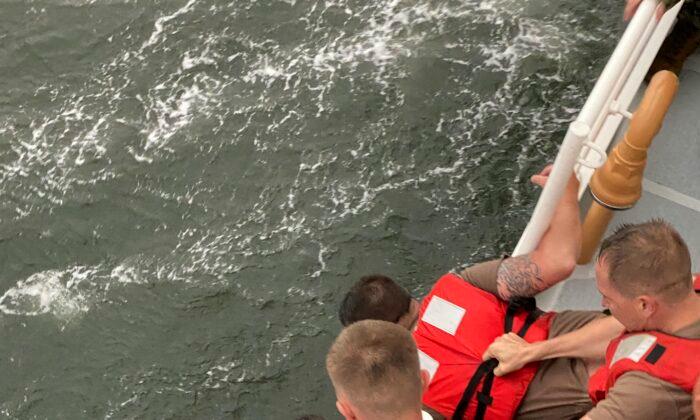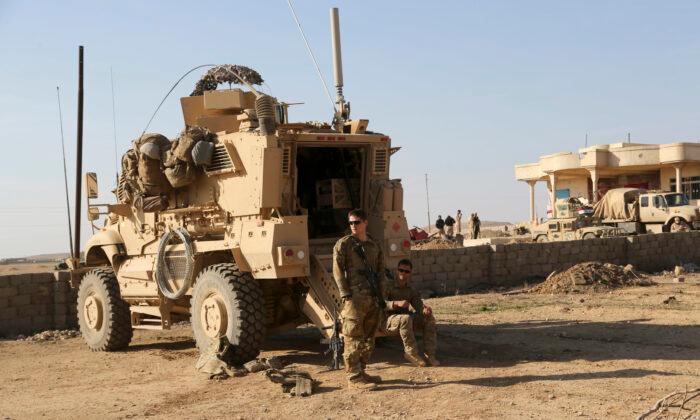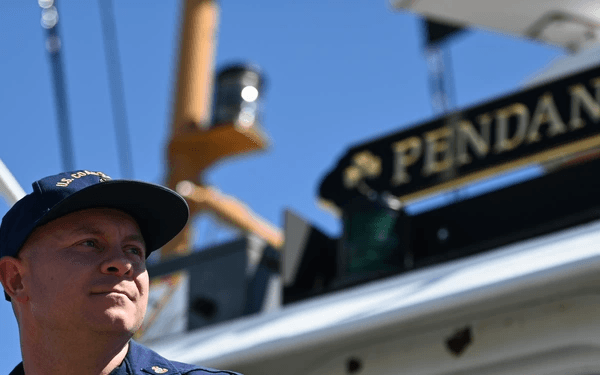The wall I’m propped against is a repurposed shipping container, one of a dozen in this tiny yard. Stacked three high and arranged to simulate the superstructure of a commercial vessel, their outsides are covered in conduit, wall-mounted air conditioners, and ladders and railings. At first glance, the whole arrangement looks like the Department of Defense version of a fast-food restaurant playground. I hear muffled shouting and the hollow pop and bang of low velocity “simunition” bullets hitting the walls. It’s a strange contrast to the birds and everyday sounds of a government facility. Someone inside the containers starts screaming unintelligible commands followed by more gunfire.
My scalp prickles and tingles as the minutes tick by. I haven’t gotten enough sun to get a good base tan in years and I can feel the tentative start of a sunburn. This might be February in Charleston, but it’s still a cloudless day. I grudgingly put my cover on and scoot over into a shadow; I'd seen too many old men with chunks of their scalps and ears missing. More gunfire echoes through the walls and I replay the scenario again.
After he shot at us everything went to hell. I forgot my procedures, my verbatim legal definitions and all the training we’d endured over the last six weeks went right out the window. All I could think to do was sit and wait the shooter out. Wait for him to step far enough into the hall to give me a clear line of fire. He retreated back into his compartment and we took advantage of the moment to advance up the ladderwell to take a position on either side of the hall, guns at high ready.

The padded helmet was laying too close to my face, pressing the cotton cloth mask to my nose and mouth, every exhalation fogging my face plate even more. What should have been a normal, if stressed, communication with my partner, was turned into a shouting match every time we needed to talk. At two feet away we sounded like we were hollering through pillows. Why the hell were they making us wear COVID face masks under the simunition helmets anyway? I couldn’t see from condensation running down the inside of my helmet, I could barely hear, and every breath was a labored inhalation through multiple layers of cloth.
I was making stupid mistakes as the frustration piled onto the stress that piled onto the constant corrections from instructors before I could fix the error they spotted. It was all I could do not to march down the hall and pistol whip the hostage taker, then toss him down the ladderwell as an example to any other would-be assailants. I don’t respond to fear or threats very well. “You want to exchange fire? Fine. You can have ALL of mine, right now. Point blank.”
He released the hostage who stepped out into the hall a little too quickly and I nearly drilled the poor bastard between the eyes. The aggressor kept making demands as we tried to talk him down. Eventually, he agreed to give up and slowly stepped out. We thought we’d gotten lucky with a “no shoot win.” As he went to lower his gun to the deck, he snapped it up to point at us and we responded. Twelve rounds in about two seconds. Our guns ran dry and we reloaded by reflex action, ready to fight as the empty magazines hit the deck. I radioed the boarding officer: “Subject down, proceeding with room clearing, no injuries to team, request medical support, continuing sweep.” I was so damn angry I’d have shot the suspect two more times in the head to make sure he was dead, but we were told upfront that was an automatic failure.
Sitting outside in the breeze, breathing free without a mask, I thump my skull against the wall in aggravation while I replay each step of the exercise over and over. It’s hard to quickly come down from that kind of adrenaline high. Remembering the tight passageways and muzzle flashes, the frustration turns into a cold fear when I think about the world outside this training center. Real bullets in the hall like that would have been deafening, the gunshots blindingly bright in the dark confines. At such short-range ricochets could kill or maim just as easily as a direct hit.
Instead of bad acting and paint spatters, our return fire would have blown a volleyball-sized hole out of the subject’s back and taken a chunk of his GI tract with it. All our shots were low center mass, a long oval from just below the sternum to the top of the large intestine. The organic chemical stink of innards would have competed for the sharp tang of gun smoke. Even if we missed all the major blood vessels, he wouldn’t have been able to inhale with the middle third of his diaphragm missing.
I pick up my helmet from the grass and look it over, wondering if I’d been too keyed up to notice a grazing strike. Pink paint flecks mark two distinct splash patterns at my right ear where the paint round hit the wall. It was close enough that had they been real bullets shrapnel would have peppered the whole right side of my head. He missed me by less than two inches. I shiver in the suddenly cold air.
Since our first week here we’ve been reviewing Use of Force Policy, Levels of Force—scenario after scenario after scenario on “what if” and de-escalation. Then we go into the shoot houses and the gun range where we’re taught to draw and fire in a second and a half, hitting a spot three inches across from fifteen yards away. Too far to see if the flash in the subject’s hands is a phone, or nickel-plated revolver, too fast to tell if they’re putting it down or aiming in to kill us. We’re taught to hit the heart from a foot and a half away with the butt of the pistol tucked hard into our ribs.
We have to process the scene in a second and make a life-or-death snap decision that cannot be undone. This isn’t to say that we walk into every situation with our hands on our guns waiting to draw and fire. Most of our training is about doing everything we can to NOT put ourselves in such a situation. In fact, the Coast Guard has fewer shooting incidents from law enforcement action than almost every other federal agency. Every lethal use of force is prefaced with a loud clear warning, “Put the weapon down or you may be shot!” Sitting here outside the shoot house all I can think about are those bullets hitting the wall next to my head. My hands tingle from the pistol jerking in my hand as I fire as fast as possible.
I left my pistol and magazines at the clearing station inside the shoot house. I can still feel the memory of their weight dragging at my belt. I’ve been here less than two months and notice the absence of their weight more than I do their presence. I don’t think I’ll ever look at law enforcement officers or regular civilians the same way again. Everything has become a threat assessment.
Sleep is going to be a long time coming tonight.




